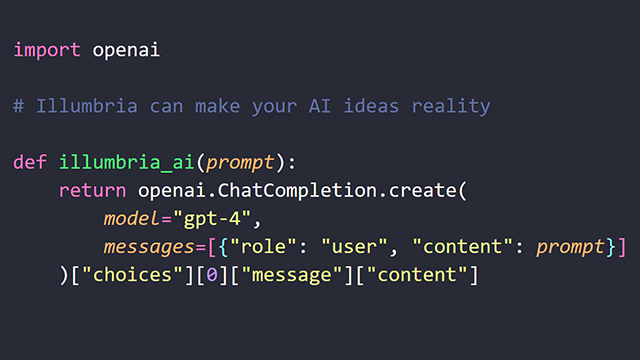Large Language Models (LLMs) have emerged as highly influential AI technologies. As we progress through 2025, these sophisticated models are impacting industries across the economic landscape, driving significant interest, investment, and exploration into new ways businesses can operate.1 While the journey involves navigating implementation challenges and demonstrating clear return on investment, the potential for transformation is undeniable.5
In this article, we examine five key sectors where LLMs are making a noticeable impact, highlighting ongoing applications and strategic considerations for business leaders based on observations from the 2024-2025 period.
1. Healthcare: Augmenting Clinical Insights and Research
Healthcare organizations are increasingly exploring and adopting LLMs, often through partnerships, to enhance patient care and accelerate medical research.1 By late 2024, a significant majority of healthcare leaders reported exploring or adopting generative AI capabilities, moving beyond proofs of concept toward implementation.1
Key Areas of Exploration:
- Clinical Decision Support: LLMs are being integrated into healthcare applications to assist clinicians by processing vast amounts of medical literature and patient data.7 Research indicates potential improvements in diagnostic accuracy in specific contexts, such as using structured prompting approaches 7 or Retrieval-Augmented Generation (RAG) to integrate specialized knowledge, which showed high accuracy in determining surgical fitness in one study.10 However, realizing this potential requires careful management of risks like "medical hallucinations" and model overconfidence, often necessitating domain-specific adaptation through techniques like RAG or fine-tuning.10
- Drug Discovery Acceleration: The pharmaceutical industry is applying LLMs to analyze scientific literature and predict molecular interactions, aiming to streamline the traditionally long and costly drug discovery process.11 There is a strong belief that integrating LLMs, potentially alongside other AI technologies, can significantly accelerate the drug discovery pipeline, although specific, widely achieved timeline reductions were still emerging targets in early 2025.11
- Personalized Treatment Plans: LLMs show potential in helping physicians develop more personalized treatment plans by analyzing individual patient data against broad medical knowledge bases, aligning with the trend towards more predictive and personalized healthcare.14
2. Financial Services: Enhancing Risk Management and Customer Interaction
The financial sector is actively exploring LLM technology, particularly for processing textual financial data, though challenges like domain mismatch and ensuring model reliability remain.5
Key Areas of Exploration:
- Advanced Risk Assessment: Financial institutions are using AI and LLMs to analyze diverse data sources like news feeds, regulatory filings, and market reports to identify emerging risks.17 AI-driven models show potential to outperform traditional methods by adapting to real-time data.18 Advanced techniques like multi-agent systems are being researched to improve forecasting, especially in volatile conditions.18 However, effective implementation requires robust data governance and risk management frameworks.5
- Personalized Banking: LLMs are being employed to better understand customer needs, enabling more tailored financial product recommendations and advice.17 While personalization generally aims to increase customer engagement 19, specific, widely validated metrics on adoption rate increases due to LLMs were still developing in early 2025.
- Fraud Detection: LLMs assist in fraud detection by analyzing transaction data and communications for suspicious patterns and summarizing complex cases for investigators.20 Advanced techniques like Graph Neural Networks (GNNs) are also showing promise in research settings.21 However, AI itself introduces new fraud vectors, such as sophisticated deepfakes challenging identity verification.20
3. Marketing and Customer Experience: Deepening Understanding and Engagement
Marketing is leveraging LLMs to understand customer intent, generate personalized content, and automate interactions, shifting towards more sophisticated engagement.17
Key Areas of Exploration:
- Content Creation and Optimization: LLMs are used to generate various forms of marketing copy and content tailored to specific audiences.17 The goal is often to increase engagement through personalization, a strategy generally known to boost user interaction.19
- Customer Service Automation: AI-powered conversational agents are increasingly handling customer inquiries. Gartner predicted that such tools would handle 70% of customer interactions by 2025.19 LLMs enhance these agents, enabling more natural conversations, and customers anticipate more interactions with AI for efficiency gains.22
- Market Intelligence: LLMs can analyze consumer sentiment across various online sources to identify emerging trends, offering potential advantages in market responsiveness.17
Innovation Spotlight: Conversational Commerce
The conversational commerce market is experiencing rapid growth, projected to expand significantly by 2035.25 Powered by increasingly sophisticated LLMs 26, businesses are integrating AI chatbots and assistants into messaging platforms and websites to create more personalized and proactive shopping experiences.22 The focus is shifting towards seamless, potentially multimodal interactions across various channels.22
4. Manufacturing: Optimizing Processes and Managing Knowledge
Manufacturers are exploring AI, including LLMs, to move from reactive problem-solving towards proactive optimization, driven partly by the high costs of unplanned downtime.27 A majority see AI as a potential game-changer, with many planning increased investment.2
Key Areas of Exploration:
- Knowledge Capture and Transfer: LLMs offer a potential mechanism to ingest and structure information from vast amounts of technical documents and logs, aiding knowledge preservation. However, data quality and contextualization remain significant challenges for manufacturers implementing AI.2
- Predictive Maintenance: AI-based predictive maintenance is a major focus, using algorithms to analyze sensor data and maintenance records to forecast equipment failures.30 This is crucial given that unplanned downtime costs manufacturers billions annually.27 The AI-based predictive maintenance market is projected to grow substantially.30
- Supply Chain Optimization: Improving supply chain resilience is a key driver for AI adoption in manufacturing.27 LLMs could potentially analyze global news, logistics data, and supplier information to predict disruptions, though specific applications were still emerging.
While early AI investments show positive ROI in areas like operational efficiency 2, achieving widespread, optimized deployment requires navigating challenges like data quality (a top concern 2), skills gaps, and ROI validation.
5. Legal Services: Enhancing Research, Analysis, and Document Drafting
Despite traditional resistance, the legal industry saw significant AI exploration and adoption by 2024, with many lawyers using AI tools to some extent.31 Professionals anticipate AI will impact a substantial portion of their work in the coming years.3
Key Areas of Exploration:
- Legal Research Acceleration: Generative AI tools are used to speed up legal research tasks, leveraging their ability to process large volumes of text.31
- Contract Analysis: AI tools are widely used to automate and accelerate the review of contracts, identifying clauses, assessing risks, and checking compliance.32 Specialized tools aim to reduce review times significantly.23
- Document Generation and Review: AI assists lawyers in drafting legal documents and correspondence, potentially automating a large percentage of routine tasks and freeing up time for strategic work.31
Emerging Trend: Regulatory Compliance Assistance
AI is being explored to assist with regulatory compliance tasks. For example, GenAI can help auto-generate alert narrations in financial compliance by analyzing transaction context and risk factors.33 However, the complexity of regulations and the need for accountability mean human oversight remains crucial, especially as AI governance policies continue to evolve.34
Effective integration requires addressing ethical considerations, developing clear usage policies (which lagged behind adoption rates in 2024 31), and potentially adapting business models.3
The Future: Multi-Modal LLMs and Cross-Industry Integration
Looking beyond 2025, a significant advancement lies in multi-modal LLMs, which integrate language understanding with other data types like vision, audio, and structured data.35 Models with these capabilities were emerging by early 2025.26
Potential applications include:
- Healthcare: Analyzing medical imaging alongside patient history and literature.35
- Manufacturing: Combining visual inspection data with technical documentation analysis.36
- Financial Services: Integrating visual market charts with news sentiment and numerical data for richer insights.5
This expansion promises to unlock new use cases but also introduces new complexities in development and implementation.35
Implementation Considerations
Organizations exploring LLMs should consider several critical factors consistently highlighted in research:
- Data Quality and Governance: High-quality, well-governed data is essential for reliable results, particularly in regulated sectors like finance.5 It remains a top concern for implementers.2
- Domain Specialization: General-purpose LLMs often need adaptation, such as fine-tuning or using RAG, to perform optimally with industry-specific terminology and tasks.5
- Human-AI Collaboration Model: Defining how humans and AI systems work together is key, as AI often augments rather than replaces human capabilities.37 AI literacy among staff is also important.34
- Ethical Guidelines and Responsible AI: Establishing clear guidelines for fairness, transparency (explainability), accountability, and privacy is crucial.35 Navigating the evolving regulatory landscape and ensuring responsible use are paramount.31
Conclusion
The influence of LLMs across industries was clearly accelerating in early 2025, driving significant exploration and investment.1 While the potential for efficiency gains, enhanced personalization, and new capabilities is substantial 17, organizations were actively working through the practicalities of implementation. Success involved moving beyond initial experimentation to demonstrate tangible value, address data and ethical challenges, and integrate these powerful tools effectively and responsibly into workflows.5 As these technologies continue to evolve, organizations that strategically explore and adopt LLM applications, focusing on clear use cases and robust implementation practices, are positioning themselves to navigate this transformative period.
Works cited
- Generative AI in healthcare: Current trends and future outlook | McKinsey https://www.mckinsey.com/industries/healthcare/our-insights/generative-ai-in-healthcare-current-trends-and-future-outlook
- Future of Manufacturing Project: The Growing Competition for AI Supremacy https://manufacturingleadershipcouncil.com/future-of-manufacturing-project-the-growing-competition-for-ai-supremacy-37689/
- Navigating the challenges of 2025: Law firms in the age of innovation https://legal.thomsonreuters.com/blog/navigating-the-challenges-of-2025-law-firms-in-the-age-of-innovation/
- AI in the workplace: A report for 2025 - McKinsey https://www.mckinsey.com/capabilities/mckinsey-digital/our-insights/superagency-in-the-workplace-empowering-people-to-unlock-ais-full-potential-at-work
- Responsible Innovation: A Strategic Framework for Financial LLM Integration - arXiv https://arxiv.org/html/2504.02165v1
- Predictions 2025: Hard-Won Insights Drive Growth - Forrester https://www.forrester.com/predictions/
- Structured clinical reasoning prompt enhances LLM's diagnostic capabilities in diagnosis please quiz cases - PMC - PubMed Central https://pmc.ncbi.nlm.nih.gov/articles/PMC11953165/
- Medical Hallucination in Foundation Models and Their Impact on Healthcare - medRxiv https://www.medrxiv.org/content/10.1101/2025.02.28.25323115v1.full-text
- A systematic review of large language model (LLM) evaluations in clinical medicine - PMC https://pmc.ncbi.nlm.nih.gov/articles/PMC11889796/
- Retrieval augmented generation for 10 large language models and its generalizability in assessing medical fitness - PMC https://pmc.ncbi.nlm.nih.gov/articles/PMC11971376/
- Large language models facilitating modern molecular biology and novel drug development https://pmc.ncbi.nlm.nih.gov/articles/PMC11703923/
- From Data to Drugs: The Role of Artificial Intelligence in Drug Discovery https://wyss.harvard.edu/news/from-data-to-drugs-the-role-of-artificial-intelligence-in-drug-discovery/
- Large language models facilitating modern molecular biology and novel drug development https://www.frontiersin.org/journals/pharmacology/articles/10.3389/fphar.2024.1458739/full
- Healthcare Trends Shaping 2025 And Insights For Industry Leaders - Forbes https://www.forbes.com/councils/forbesbusinesscouncil/2025/01/14/healthcare-trends-shaping-2025-and-insights-for-industry-leaders/
- Responsible Innovation: A Strategic Framework for Financial LLM Integration - arXiv https://arxiv.org/pdf/2504.02165
- Next-Generation AI in Financial Services - theCUBE Research https://thecuberesearch.com/next-generation-ai-in-financial-services-2/
- Economic potential of generative AI - McKinsey https://www.mckinsey.com/capabilities/mckinsey-digital/our-insights/the-economic-potential-of-generative-ai-the-next-productivity-frontier
- (PDF) AI-Driven Financial Risk Management with LLM Agents and Adaptive Learning https://www.researchgate.net/publication/390483692_AI-Driven_Financial_Risk_Management_with_LLM_Agents_and_Adaptive_Learning/download
- The Dawn of a New Era | Harris Kalofonos - Goodvoice Group https://www.goodvoicegroup.com/journal/the-dawn-of-a-new-era
- 2025 Predictions: How will the interplay of AI and fraud play out? - Thomson Reuters https://www.thomsonreuters.com/en-us/posts/corporates/2025-predictions-interplay-fraud-ai/
- (PDF) Graph AI for Fraud Detection: Improving Risk Management and Compliance in Digital Finance - ResearchGate https://www.researchgate.net/publication/390424252_Graph_AI_for_Fraud_Detection_Improving_Risk_Management_and_Compliance_in_Digital_Finance
- State of Conversational AI: Trends and Future [2025] - Master of Code Global https://masterofcode.com/blog/conversational-ai-trends
- The 9 best AI contract review software tools for 2025 | LEGALFLY https://www.legalfly.com/post/9-best-ai-contract-review-software-tools-for-2025
- Legal AI Talk: Latest Large Language Model Trends https://www.legartis.ai/blog/latest-large-language-model-trends
- Conversational Commerce Market Poised for Rapid Growth, - GlobeNewswire https://www.globenewswire.com/news-release/2025/03/14/3042713/0/en/Conversational-Commerce-Market-Poised-for-Rapid-Growth-Surging-from-USD-8-801-6-Million-in-2025-to-USD-32-672-9-Million-by-2035-Future-Market-Insights-Inc.html
- Top 9 Large Language Models as of April 2025 | Shakudo https://www.shakudo.io/blog/top-9-large-language-models
- Why 80% of Manufacturing Leaders Are Investing in Industrial AI Right Now - Ascentt https://www.ascentt.com/the-manufacturing-sector-is-undergoing-a-seismic-change-due-to-the-sudden-onset-of-ai-according-to-research-from-vanson-bourne-titled-the-state-of-artificial-intelligence-for-enterprises-80-of-ente/
- The Future of Manufacturing: Navigating 2025 with AI, Data, and GenAI in a Challenging Global Environment - Lovelytics https://lovelytics.com/navigating-2025-with-ai-data-genai/
- The Alarming Costs of Downtime: How Lost Production Time Threatens Your Bottom Line in 2025 - Arda Card https://www.arda.cards/post/the-alarming-costs-of-downtime-how-lost-production-time-threatens-your-bottom-line-in-2025
- AI-Based Predictive Maintenance Market Report 2025-2030: A - GlobeNewswire https://www.globenewswire.com/news-release/2025/04/02/3054012/0/en/AI-Based-Predictive-Maintenance-Market-Report-2025-2030-A-Projected-US-1-69-Billion-Landscape-Businesses-Must-Invest-in-Cloud-and-Edge-Technologies-for-Future-Success.html
- How Lawyers Can Overcome Fear and Embrace AI in 2025 https://www.2civility.org/how-lawyers-can-overcome-fear-and-embrace-ai-in-2025/
- Trends 2025: AI in Contract Analysis - Legartis https://www.legartis.ai/blog/trends-ai-contract-analysis
- Teaching Machines to Spot What Matters | Corporate Compliance Insights https://www.corporatecomplianceinsights.com/teaching-machines-spot-what-matters/
- How companies can secure language models against emerging AI cyber risks | EY - India https://www.ey.com/en_in/insights/ai/how-companies-can-secure-language-models-against-emerging-ai-cyber-risks
- Multimodal Large Language Models for Image, Text, and Speech Data Augmentation: A Survey - arXiv https://arxiv.org/html/2501.18648v2
- arXiv:2503.04506v1 [cs.SE] 6 Mar 2025 https://arxiv.org/pdf/2503.04506
- How AI is Changing the Future of Work in 2025 | by TechNomad Grid - Medium https://medium.com/@sharunp029/how-ai-is-changing-the-future-of-work-in-2025-711bd2a6d24f


